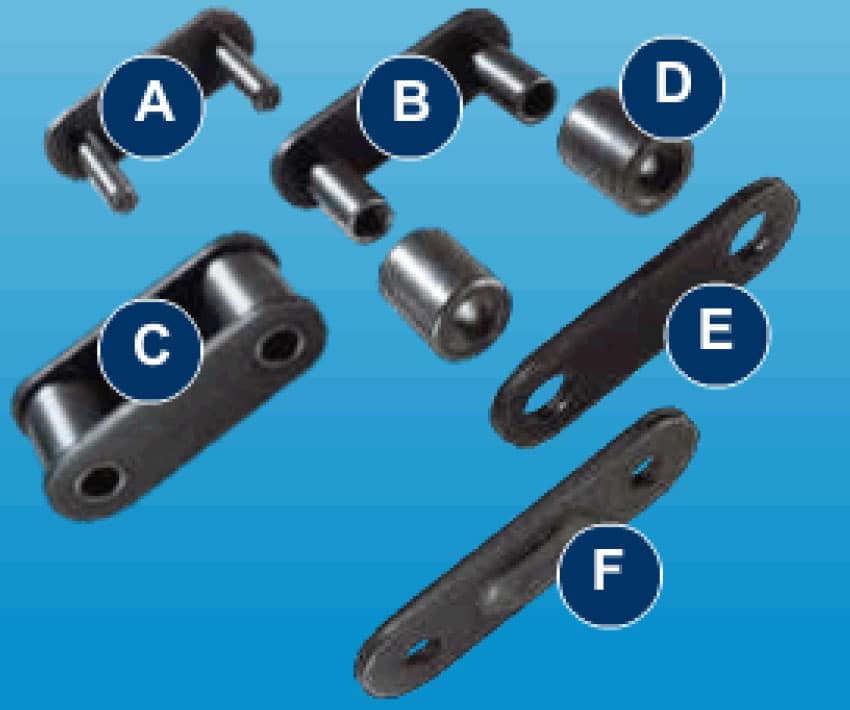
The chain
A. The outer link with pins
B. The inner link with bushes
C. The inner link
D. Rollers
E. Inner plate
F. Outer plate
The above-mentioned essential components make up the transmission roller chain. Two are the main parts: links and pins; while the bushes and the rollers improve the functional characteristics and reduce friction.
We can use these components in different combinations: attachments – extended pins – special attachments according to the conveyor requested.
On these bases, a chain can have solid pins or hollow pins.
The production of roller chains follows the below-mentioned Standards.
- DIN 8187 (ISO -606) Roller chains (European Series)
- DIN 8189 (ISO -606) Roller chains (American Series)
- DIN 8181 (ISO -1275) Roller chains (Long-pitch series)
- DIN 8189 (ISO -487) Roller chains (Agricultural series)
- Chains according to Internal Standards
The chain is an ancient mechanical organ. In fact, the ancient Romans already used chains as lifting devices for water. With the coming and the diffusion of motorization, chains improved and became authentic mechanical organs. Their use as transmission lifting and conveying organs started to become considerable.
The evolution of the industrial plants and how they are used imposed that chains were perfected to face the increasing requirements concerning resistance, duration and yielding. Rosa Catene Spa reached these results with the highest quality of raw materials, precision during the manufacturing process, full control of heat treatments and all process parameters.
Are you looking for more information?
Contact us now to receive more information and/or free estimates


